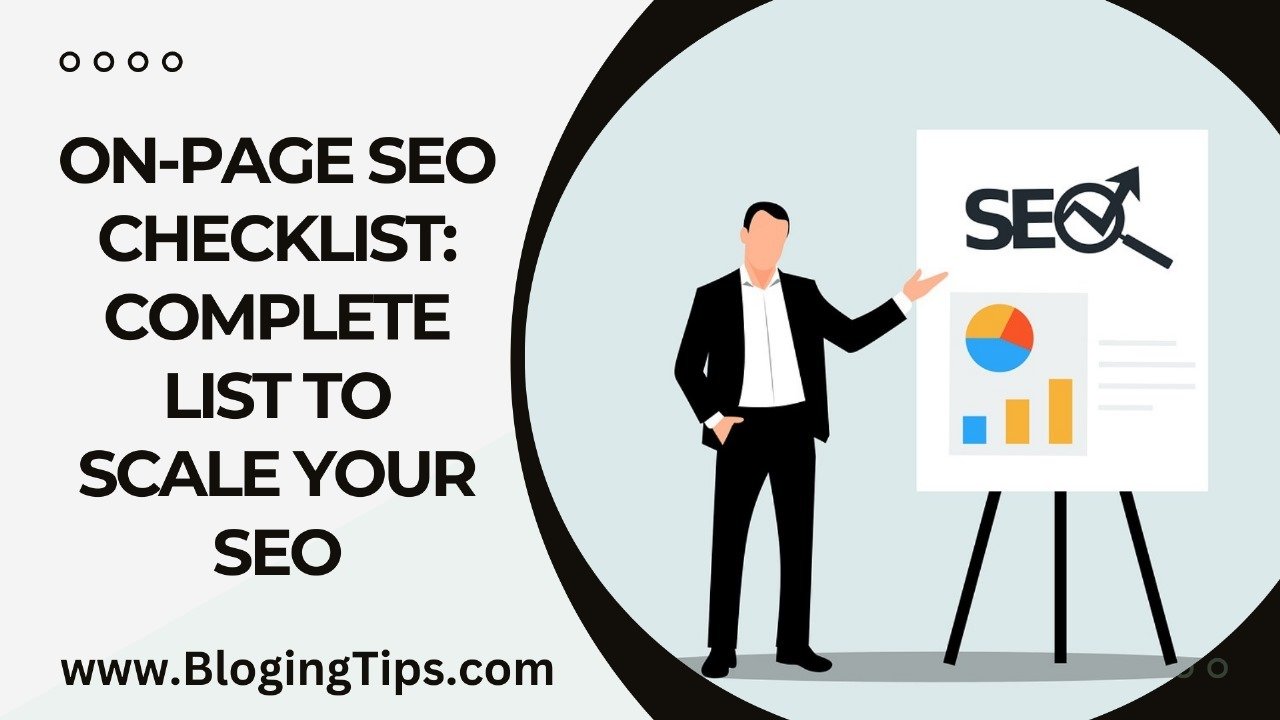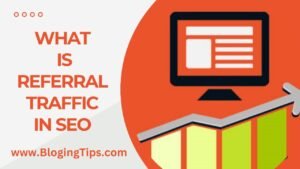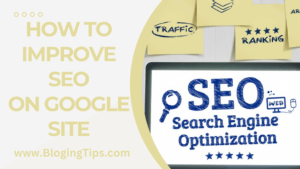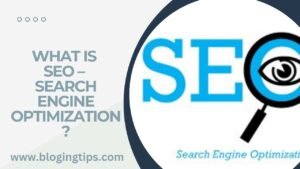If you’re seeking to boost your search engine rank, boost organic traffic, and enhance the user experience, then using the on-page SEO checklist is essential. The following guide will benefit you gain the knowledge of an online SEO checklist. That can help you to use strategies that are attractive to search engines as well as users.
By implementing these methods by implementing these strategies. Search engines will be able to comprehend your website and its material and the benefits it offers visitors and consumers. Additionally, it’s helpful to know the material of your website is appropriate to the user’s requirements.
In addition On-page optimization strategies. Such as strategically placed keywords, Meta-tags which have been optimized and headers, and seamless mobile responsiveness can provide search engines a model for your content. Simply put it this way, you must follow the page-specific SEO checklist to improve your ranking in Google.
On-Page SEO Checklist
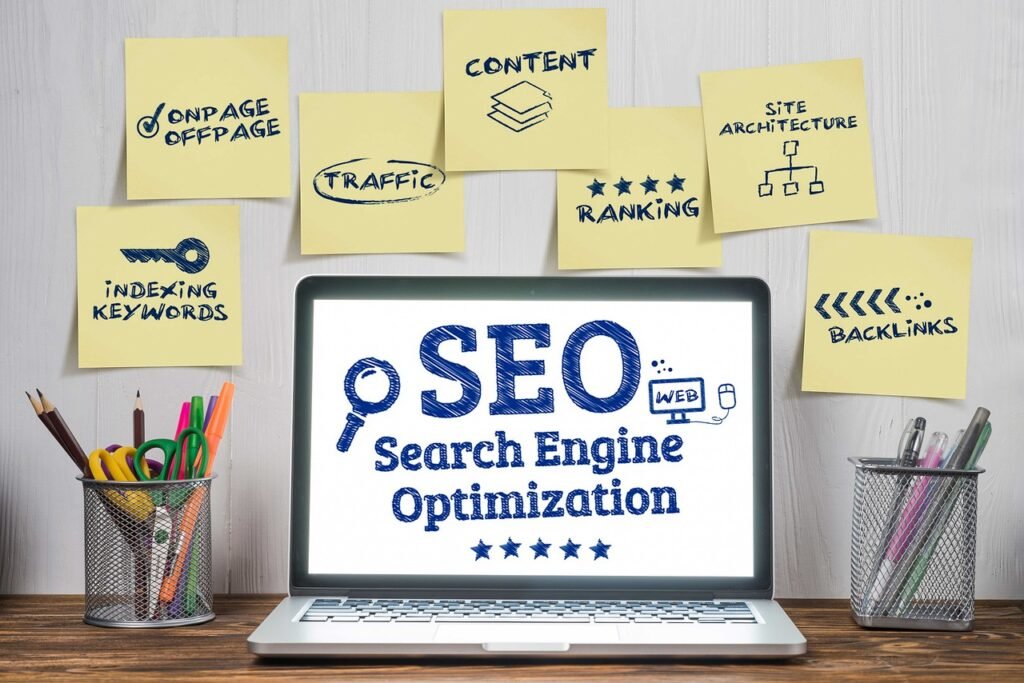
What is On-Page SEO What Is On-Page SEO
The main goal of An On-Page SEO list can be improve popularity of the site and also improve its ranking. On-page SEO therefore means the optimization of the material of your material together the on-page SEO methods.
1. What exactly is SEO? SEO?
On-page SEO is the most important element of everyday SEO. It’s the process of enhancing your web pages and the content for viewing by search engines and also by your customers. The goal of SEO is to improve your web site’s page-to-page SEO can benefit get your website’s pages ranked higher on search engines, such as Google. This outcome in increased organic traffic, and also a higher amount of revenue flowing to your website.
on-page SEO are the elements on the page that influence the SEO efficiency. It is a term used to describe the combination of material and technical SEO that focuses on improving the pages in their own. It’s not limited to only material, however, it also covers meta-tags anchor texts, titles images, photos and many more.
To guarantee your success, you must implement strategies to optimize your site’s on-page performance. That these elements function in conjunction to ensure that your content is optimized for viewing by search engines, and is equally valuable to your intended public. The foundation to a successful on-page SEO is to demonstrate competence credibility, authenticity and trustworthiness (or an acronym like”EAT”).
2. Important On-Page SEO Factors
The most important thing to consider is the fact that the web-based SEO relies on content of the site. That means that any material on the website could influence SEO. The principal on-page SEO elements are:
Content Content: The text of the text must be original, and fit the purpose of the search, anticipate and answer the next query of the user. It should also incorporate relevant keywords from the web page SEO list.
Title Tags The title tag represents your website’s name on Google which determines if people will click on your content. So, ensure that your material is responsive to the needs of users. That are based on keywords and draws the attention of visitors using strategically selected words or numbers.
headings The headings provide the structure of the text to the reader as well as the search engine. There are six types of headings which range from H1 through H6, H1 being the most popular and most significant. Be sure to include the appropriate keywords in the headlines.
URLs To describe an internet page in a simple way, you should include keywords in URLs. Make URLs as short as you can and easy to understand for users and search engines. users.
Internal linking This is the incorporation of relevant hyperlinks into your material which benefit users and search engines navigate your site efficiently. You should try to include at least three internal links per article, or create the pillar material if necessary.
Optimization of images: Increase the value of your content by using pictures. Authentic images are able to boost SEO however in the event that they’re unavailable. You should use images that match you material. Images need to be linked with alt text in order in order to make them searchable and also descriptive text that bring the necessary information to search engines.
After you’ve accomplished all of these steps, and have met all the steps on the page SEO checklist You’ll be in situation to actually achieve the excellent page visibility and rank.
On-page Technical Optimization SEO Checklist
The technical side of SEO can affect your ranking. But the benefit is that technology-related SEO problems are quite simple to solve. Especially when you follow the specific page SEO list.
1. Pay attention to Meta Descriptions and Title Tags
The tag title is your title on the website page which appears in Google and other search engines. That means that if you type an inquiry on Google and click on the title of your article. The first page to pop up is the one which appears with the name. You should ensure that your title tags are as relevant as possible since users click when they feel they are able to relate the content to the search they are doing.
Here are the key points to keep in mind when you are reading your title tag
- Include your key word
- Do not overdo it by using keywords.
- Be sure to include your primary keyword before any other keywords.
- Its length must be within the range of 60 characters
- Only use capitals.
Add some numbers or even names which will entice the mass of people (for example, 8 amazing B2B marketing strategies that will your business by 2024.)
It’s not the same as the H1 tag, which can be used to identify the subject of your website’s article. This is because certain texts are more effective if the tag is different from the title tag differs from the H1.
Meta descriptions have less than 160 characters that describe what’s on the material of your site. Be sure they accurately communicate the material of your site and contain the most relevant keywords, as they can have a huge influence on whether your intended visitors will go to their descriptions or leave.
Meta-descriptions that are efficient will benefit improve the quality of your SEO payoff. The objective is to rise the number of clicks that increase the rank of your website on the search result page.
2.Follow an appropriate URL structure
It is vital to design an URL structure that is optimized for SEO and user-friendliness. A well-designed URL structure can increase the number of clicks on search engines and also internal navigation on websites.
The most significant characteristics of a good URL are:
- Simple and simple to understand
- Should contain keywords
- It must be clear what the page’s material is.
- Separate words that are separated by the hyperhen
- It is not recommended to discuss the years that might be changing.
If visitors visit this website, they will be able to see what the content is at a look. It also assures that the spiders of search engines are aware what is on your site prior to accessing it, which makes indexing your website easy for users. Furthermore, the URL allows you include your keywords in a different spot.
However, if your URL is https://example.com/?information=1.html: users will not know what the page is about. This kind of URL renders it difficult for a spider to read your article’s material.
URLs play an essential contribution to your site’s initial ranking on the page category. When you think about the significance of the structure of your URL is for the performance of your site, it’s a important element of your page’s SEO list.
3. Make sure that your keywords are optimized
To ensure that your site appears in the correct outcome for the right search outcome It is essential to incorporate keywords into your website. Also, you should conduct keyword research to find the keywords or terms that people search for to find sites like yours.
Because Google gives more weight to the first 100-150 phrases on web pages, you must use your keyword just at a single time. In this article the word “on-page SEO checklist’ will be used in the initial 100 characters.
An alternative choice for you to increase the efficiency for keywords is to integrate the keywords in H1 tags or H2 tags. In this scenario, the word “on-page” SEO is used as the primary subheader itself.
It is important to ensure that the amount of your primary keyword and any other keywords that are long-tail or related remain within a range of 1-2 percent throughout the material of your page. The most crucial elements on your page to include keywords are:
- Titles
- Headers
- Meta Tags
- Body Content
- Images
These must be implemented in a manner that is specifically designed to ensure that search engines are aware of it and can associate it with relevant search results. Strategies for optimizing your keywords to use to warrant that you get the excellent payoff include:
- Do not be averse to keyword stuffing because this could lead to a bad user experience, and even penalty from search engines.
- Utilize the keywords sparingly, and strategically when they are of relevance and context-appropriateness.
- Regularly analyzing and monitoring of the effectiveness of key words is crucial to getting the perfect search engine results
Another advantage of this is that it will make the reading experience for your customers effortless to read and easy.
4. Create effective headings and subheadings
Subheadings and headings are crucial elements of the SEO checklist because they assist search engines to comprehend the structure and content of your site. They also rise the experience of visitors by providing them with clear and concise structure, making it simpler for them to explore your website’s content.
To be sure that you have put together efficient headers as well as subheadings it’s important to adhere to these rules:
- The headings should focus on providing a concise and precise descriptions of the information to be followed.
- Headings should be improved with the primary keywords, and those that have the long length. Primarily, keywords are used in H1, whereas other keywords relevant to the topic are utilized in H2 to H6.
- Although H1 should be advised to be used only one time throughout the entire article H2 and H6 subheadings are able to be used as often as is necessary.
- Avoid overusing or using heading tags since it could make it difficult for engines to recognize the main material and hinder the effectiveness for the SEO initiatives.
SEO on-page Content Optimization SEO Checklist

For material optimization, take advantage of the advantages of on-page SEO methods by ticking every box on your page’s SEO list. This will assure that your content is impressive and reach the right audience. pertinent.
1. Conduct Keyword Research and Targeting
The principal objective of researching keywords is to find keywords that are relevant to your company and also your clients. It’s a three-step process of identifying and the order and priority of terms. Let’s make it easy:
- Search for Competitors Prior to starting with your research on keywords, you should look at the keywords that your competitors are using. If they’re getting results together those keywords, then you may too.
- Focus on your primary “Money” Keywords are also called “head keywords” or “pillar keywords,” these bring in leads, as well as conversions and sales. They are highly competitive, high-volume keywords that provide insight into your content. Keywords that have a commercial or transactional intent are more likely to be converted.
- Be sure to focus on Long-Tail Keywords. They are search terms that aren’t extremely popular, making them easier to rank on. The use of long-tail keywords could result in higher conversion rates. Typically, long-tail keyword phrases contain main keywords embedded within the.
- Create Keyword Maps Keyword Map Once you’ve identified your most important keywords and you’ve identified your keywords, you must map them to the appropriate pages on your site. Keywords that relate to the same query. Concentrate on the keywords of each category to create your website’s structure as well as possible pages
- Discover the purpose of your search Find out what searches are occurring for your search term. Are they seeking information, looking to buy something or simply browsing for information? Be sure that your content matches the information they are searching for.
The search for the excellent keywords for long-tail and short-tail is just one of the things to take into consideration that could make a significant impact. Finding the excellent goal and the best chance based on the number of searches is crucial.
Finally, you must determine the kinds of questions people are asking about to your keywords. You can also evaluate the possibility of ranking for a particular keyword, and then prioritize your tasks to be compatible with. Keyword research and targeted searches are crucial elements of any on-page SEO list.
2. Prioritize material creation using quality.
The most important element of a complete web-based SEO list is content. The quantity of information that you provide can significantly impact your website’s search engine popularity. Search engines.
This is the reason when you are writing your material while writing your content, make sure to include the keywords you want to use in a planned manner, and also be aware of the following techniques:
- Add keywords at the first paragraph of your content to help them stick out.
- Utilize powerful tags to define the keywords in your content, if needed.
- Pay focus on the amount of keywords. Naturally using the same keywords across the page will rise their importance within the text.
- It is crucial to ensure a high degree of originality while reducing duplication of material on your website. Google likes distinctive material Try to make your content as original and unique that you are able to.
- Create content that is helpful as well as relevant for your viewers. Consider what they’d like to know about, what problems they’re trying to resolve and in what ways your material can benefit them.
- Separate your content with headings, bullet points and images to make it simpler for readers to read. In addition the other methods to increase your web page’s performance will determine the structure and significance to your content for search engine crawlers.
To ensure high-quality material to guarantee high-quality content You should review the current content. You can check the volume of traffic and engagement on your site. The payoff can benefit you identify areas that require improvements and increase your site’s SEO effectiveness.
Make the necessary changes and updates to ensure that your material is current and relevant. This will help maintain the quality and efficacy of your content over time while also signalling to search engines that your website is operational and is reliable.
3. Enhance Images and Media
Optimizing images and media is a vital element of the on-page SEO checklist because it will increase page views, backlinks, and shares. To keep your content entertaining you can include visual materials like instructional videos, photos of infographics, illustrations and much more.
Strategies to optimize images and media comprise:
- However, having original images could be beneficial for the on-page SEO If you do not have them, sourcing quality images is a second best opportunity. But it is perfect to avoid photos that are stock because Google detects them as duplicates and does make it difficult to increase the quality of your SEO.
- Images and media you use should be relevant to your material that is properly placed and correctly size.
- Make sure you compress and resize your multimedia files so that they won’t slow down the speed of loading on your site.
- Make sure your pictures and media are shared as this can benefit increase your consumption habits.
- When saving media or images, ensure that the name of the file is a concise description of what they’re about. For example, an infographic that concentrates on of-page SEO actions must have a title of “on-page SEO steps’, not a random number like”123456. “123456. ‘
- Media and images must include description. This can provide additional knowledge and engagement for viewers. It can also help to make your message simple.
- It is crucial that all forms of media use Alt Text (i.e. Alternatives to Text ).Textspan>). This is a part of the HTML code used on a webpage to describe your image. It aids in drawing in search engines and also increases popularity of the website. Optimizing your media’s alt text and images payoff in a higher number of visitors coming from search engines like Google and Google Photos.
A User-Friendly Experience on the Page SEO Checklist

It’s also essential to keep in mind that the experience of users is part of the strategies you employ to optimize your website’s performance on the page. Alongside your extensive internet SEO checklist, it is essential to ensure that your users are satisfied and engaged. This will ultimately boost your SEO position.
1. You can guarantee that your website loads quickly and that mobile optimization is effective.
Making sure that your website is mobile-friendly is crucial, especially since Google favors mobile-friendly sites when it comes to rankings. Since the beginning of the year, Google has been implementing mobile-first indexing across all websites.
The best ways to make your site mobile-friendly include:
- Choose a responsive website theme that can be used on phones. When creating your website, warrant that you select a design that looks great on desktops and mobile devices, to increase the rank of your search engine.
- Create navigational material and make it that is easy to read on mobile devices.
- Improve meta description and title especially for use on mobile-friendly searches engines that pay for their services (SERPs).
Also, it is important to test your website’s performance in loading. A site that loads fast is crucial for better rankings, since search engines can penalize slow-loading websites.
Furthermore, protecting your website with HTTPS is crucial since it’s a known ranking signal to Google. Having your website’s HTTPS secured isn’t just a means to increase security, but it can also increase the credibility and credibility of your website.
Also, correct any errors in crawling immediately. If Google has issues crawling, your site could be unable to index your pages and could result in a lower rank. A website that is free of errors is going to warrant that your site is easily indexed and better visibility on the outcome webpages of the search engine. Results pages.
2. Help Users Navigate User-Friendly
User-friendly navigation is a crucial element of your website’s on-page SEO list. When people browse your site it is important to make it easy to find what they’re looking for.
It’s because the website you’ve constructed is a maze and people are more likely to become bored and go away. However, when it’s well-organized as well as a simple to use visitors will stay longer and explore.
Some tips to assure that your users can navigate easily for your users are:
- It is possible to organize your menus and submenus with the benefits of H1s and H2s as well as H3s, etc.
- Labels that provide descriptive information for images and media that are easily understood by viewers of the material. Labels must not be unclear or confusing and should be a perfect match to the content they are directed to.
- Include internal links in your content for favor visitors with hyperlinks to additional websites.
- Do not overburden your customers by providing numerous menu choices. Make your menus for navigation simple and clear.
- include breadcrumbs to provide users with a path that takes them back to the point they began for them to rise your user’s experience as well as navigation.
- Make sure that your navigation is as easy for mobile devices as PCs. The key is a responsive design.
- It is also possible to add search bars on your site, making it easier for visitors to find what they’re looking for, while also improving the site’s SEO efficiency.
How do you create the best SEO Checklist for on-page SEO Checklist Design?
To increase the efficiency of your website, ensure the site’s indexing is effective by search engines to maximize the performance of your site, assure that it is properly indexing by search. To boost the ranking of your site in search engines, make sure you follow this website-page SEO checklist:
- Meta description must provide a summary of what’s on the webpage.
- Make sure that the URL contains keywords and is short and simple.
- Naturally incorporates keywords and keep an average of 1% keywords per.
- Include keywords in titles, Meta tags as well as headers. Include images, images and text material.
- Utilize powerful headings and subheadings to arrange the content.
- Make useful, relevant and enjoyable content for your customers.
- Add engaging visual content.
- Optimize the images and media by adding descriptions and compressing files to speed up loading.
- You must have a mobile-friendly, speedy website that is HTTPS secured.
- Improve navigation for users by organizing menus and submenus logically using heading tags between H1 and H6.
- Add internal links that direct viewers to other pages.
The perfect companion for the on-page SEO listing is Wittypen’s free On-page SEO assessment. It’s designed to prepare specific tips and insights which are compatible with the industry’s preferred methods to enhance your website’s SEO.
It’s as easy simply as typing in your site’s publicly available address and input that desired search term. With just one click, it’ll provide you insight into your website’s overall performance, pinpoint effective strategies, identify the most crucial problems that need to be addressed and offer methods to increase your site’s performance.
The perfect complement of the On-page SEO checklist is the Wittypen’s cost-free online SEO testing. It’s designed to offer specific tips and insights that align with the industry’s perfect methods for optimizing your website’s On-Page SEO.
It is sufficient to enter your URL that you’ve published, and you have to type in that desired search term. Just one click and you’ll get an overview of your site’s performance, pinpoint effective strategies, identify the most important issues that must be addressed, and suggest strategies to boost your site’s performance.
Conclusion Scaling Your Page Using On-Page Optimization Strategies
If you have completed a webpage SEO checklist and are proficient in these techniques, you’re not only making your content look appealing for search engine crawlers, it’s also to users as well as enjoyable. From writing attractive meta descriptions to incorporating components that work on smartphones every element affects the efficiency and efficacy of your website’s presence.
With the help of your complete On-page SEO checklist and you’ll have everything that you need to succeed in the online world. But the on-page SEO actions don’t only involve filling in the boxes. It’s about being in touch with your clients, staying up-to-date with most recent developments, and constantly making improvements to your website’s performance.
While you are on through your journey, be sure that you keep trying and learn new things, and keep striving toward bring off the new objectives. With the correct mindset, the correct approach and the right tools There’s no limit to what you can acquire together your website.
Q&A
What is an example Page SEO?
On-page SEO is a common practice that includes optimizing titles tags, material, internal links URLs, as well as various other factors that rank your website. This is distinct from off-page SEO which is making sure that you are optimizing for signals which occur on your website (for instance backlinks). Other examples are the use of social media for marketing purposes, guest posts as well as PR.
What is the local SEO checklist?
Local SEO Checklist. Pick Target Keywords for Local Search. Create Landing Pages for Target Keywords. Optimize Landing Pages for Target Keywords. Check Your Site for Technical Issues.
What is complete SEO?
SEO stands for “search engine optimization.” In simple terms, SEO means the process of improving your website to increase its visibility in Google, Microsoft Bing, and other search engines whenever people search for: Products you sell.
